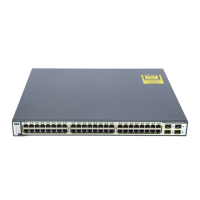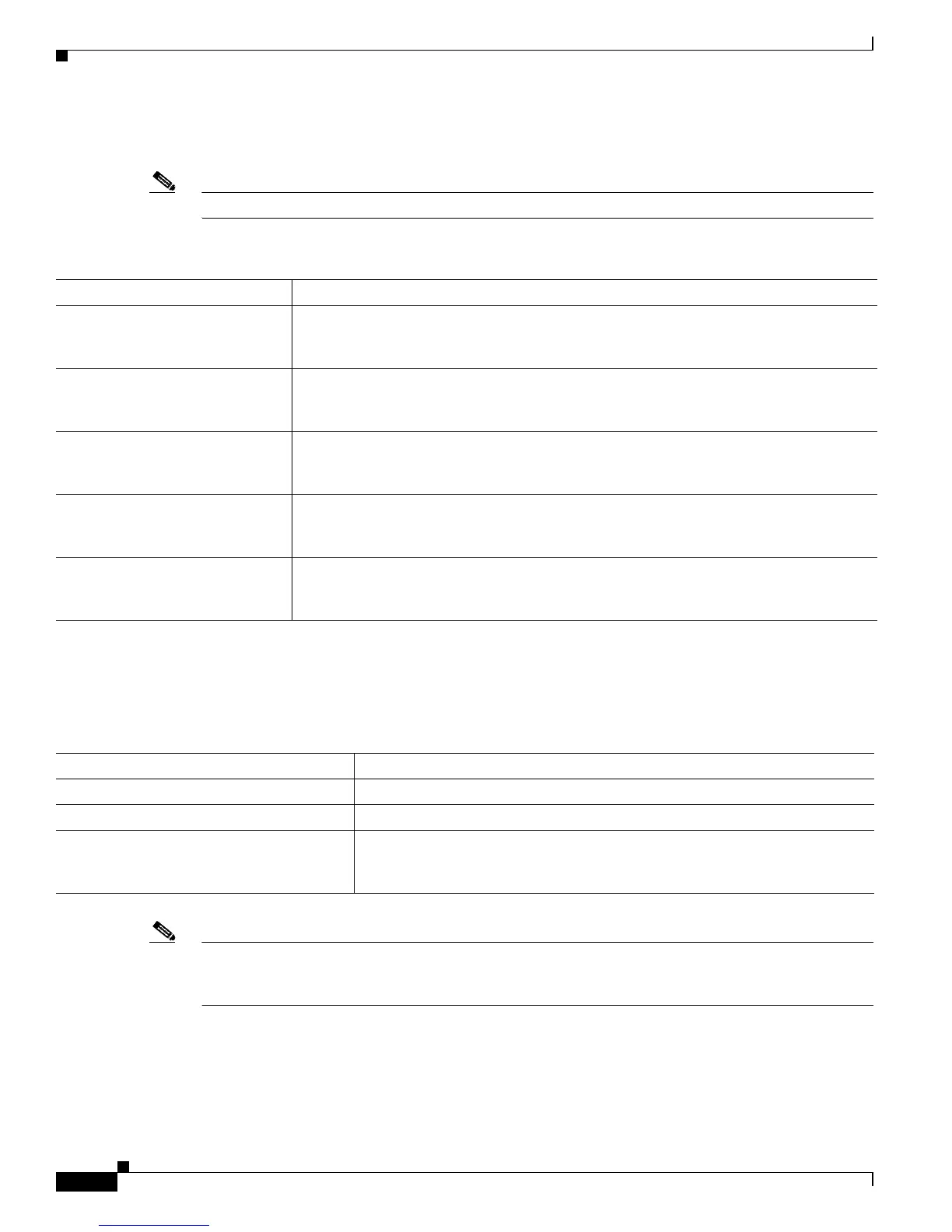13-18
Catalyst 3750 Switch Software Configuration Guide
78-16180-02
Chapter 13 Configuring VLANs
Configuring VLAN Trunks
You can also specify on DTP interfaces whether the trunk uses ISL or 802.1Q encapsulation or if the
encapsulation type is autonegotiated. The DTP supports autonegotiation of both ISL and 802.1Q trunks.
Note DTP is not supported on private-VLAN ports.
Encapsulation Types
Table 13-5 lists the Ethernet trunk encapsulation types and keywords.
Note The switch does not support Layer 3 trunks; you cannot configure subinterfaces or use the encapsulation
keyword on Layer 3 interfaces. The switch does support Layer 2 trunks and Layer 3 VLAN interfaces,
which provide equivalent capabilities.
The trunking mode, the trunk encapsulation type, and the hardware capabilities of the two connected
interfaces decide whether a link becomes an ISL or 802.1Q trunk.
Table 13-4 Layer 2 Interface Modes
Mode Function
switchport mode access Puts the interface (access port) into permanent nontrunking mode and negotiates to
convert the link into a nontrunk link. The interface becomes a nontrunk interface
regardless of whether or not the neighboring interface is a trunk interface.
switchport mode dynamic auto Makes the interface able to convert the link to a trunk link. The interface becomes a trunk
interface if the neighboring interface is set to trunk or desirable mode. The default
switchport mode for all Ethernet interfaces is dynamic auto.
switchport mode dynamic
desirable
Makes the interface actively attempt to convert the link to a trunk link. The interface
becomes a trunk interface if the neighboring interface is set to trunk, desirable, or auto
mode.
switchport mode trunk Puts the interface into permanent trunking mode and negotiates to convert the
neighboring link into a trunk link. The interface becomes a trunk interface even if the
neighboring interface is not a trunk interface.
switchport nonegotiate Prevents the interface from generating DTP frames. You can use this command only when
the interface switchport mode is access or trunk. You must manually configure the
neighboring interface as a trunk interface to establish a trunk link.
Table 13-5 Ethernet Trunk Encapsulation Types
Encapsulation Function
switchport trunk encapsulation isl Specifies ISL encapsulation on the trunk link.
switchport trunk encapsulation dot1q Specifies 802.1Q encapsulation on the trunk link.
switchport trunk encapsulation negotiate Specifies that the interface negotiate with the neighboring interface to become
an ISL (preferred) or 802.1Q trunk, depending on the configuration and
capabilities of the neighboring interface. This is the default for the switch.

